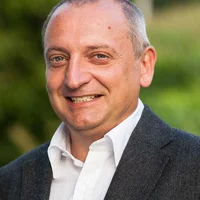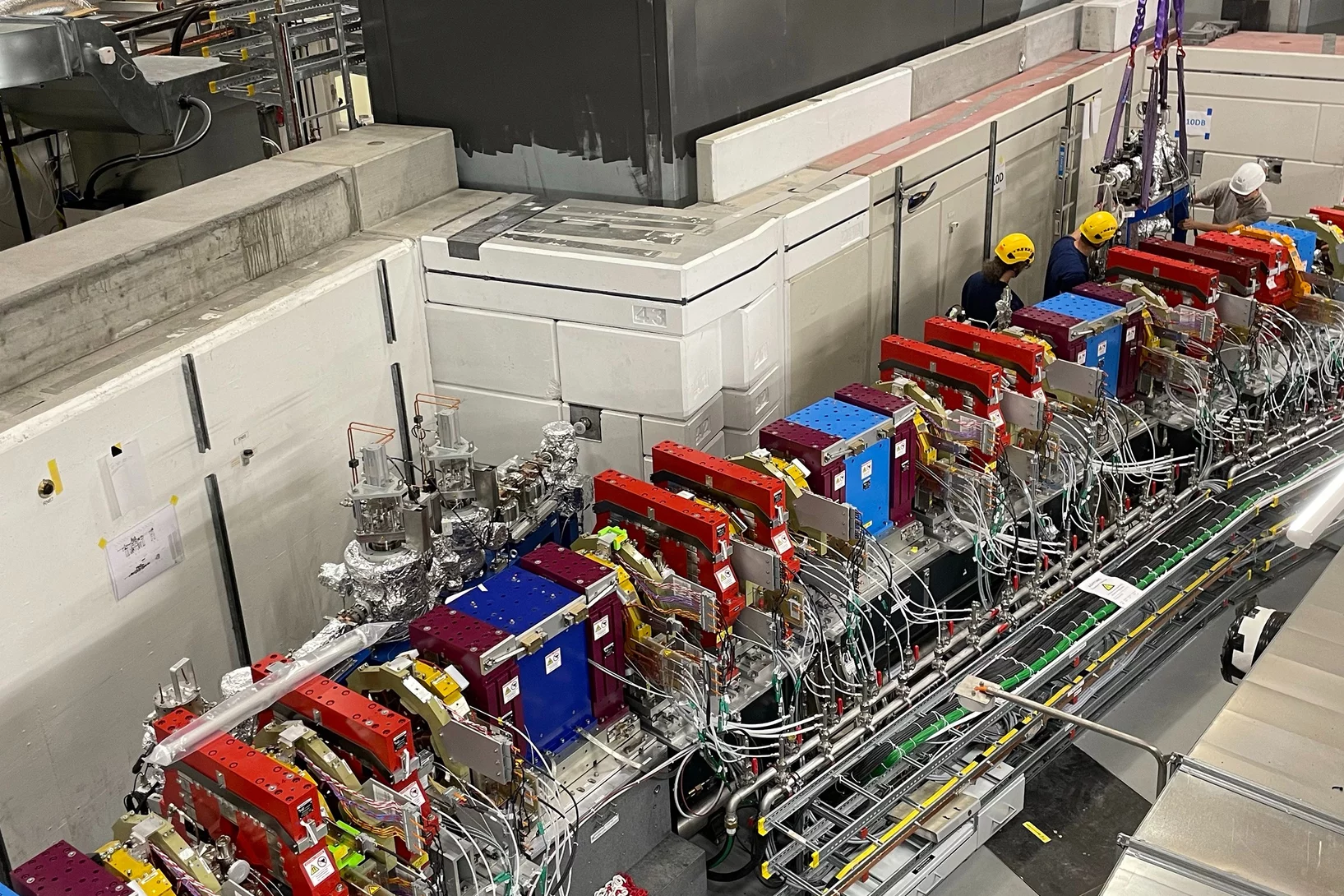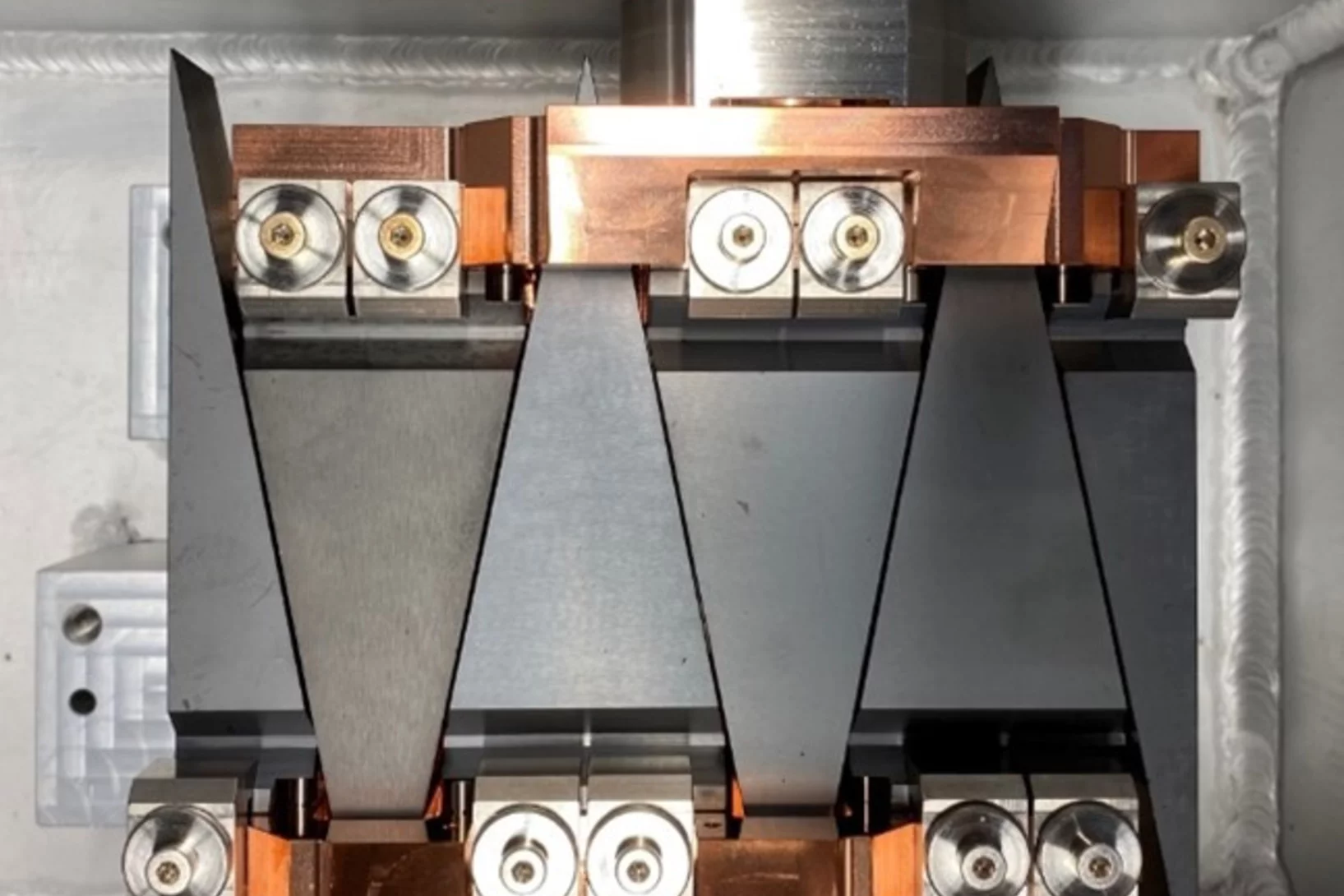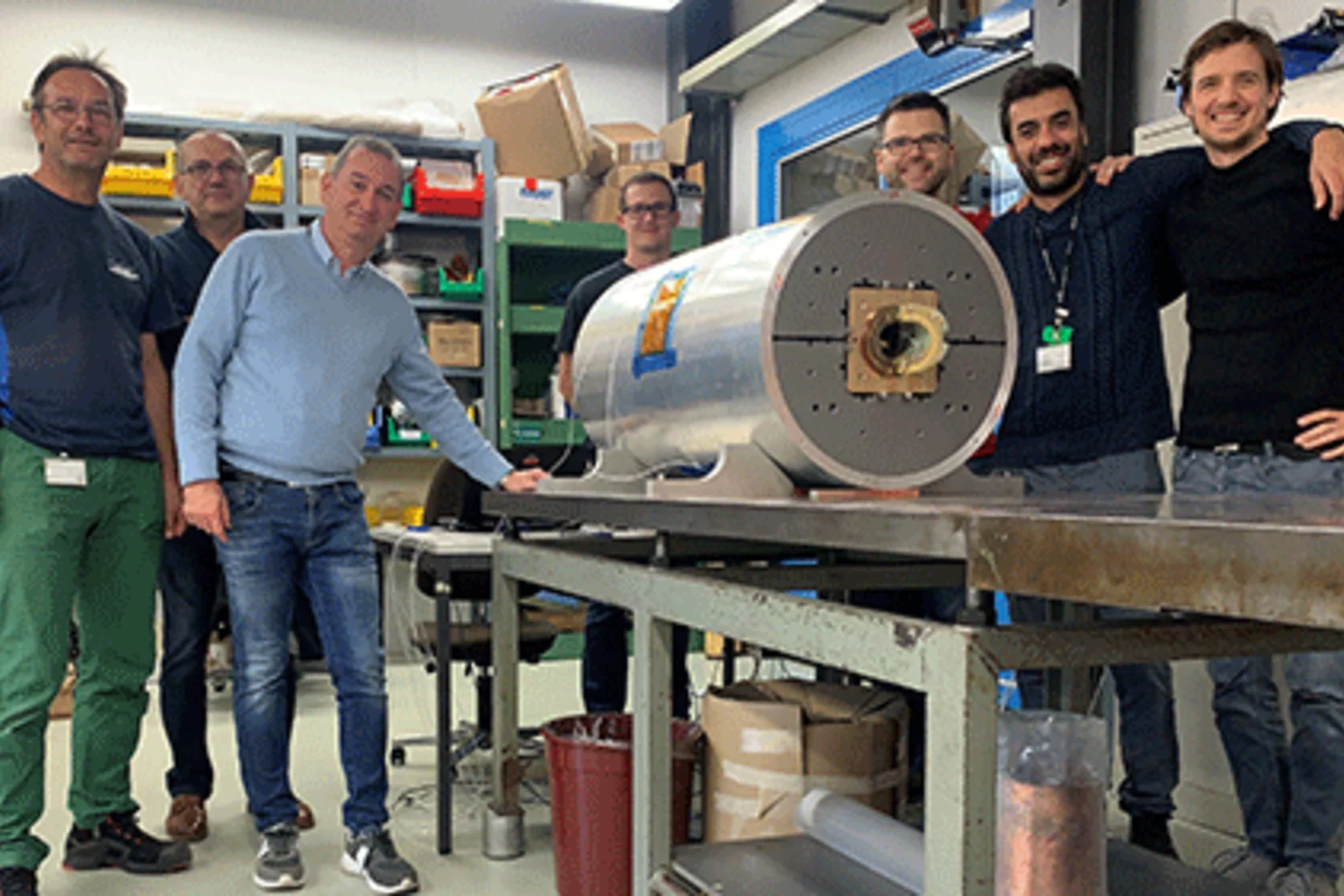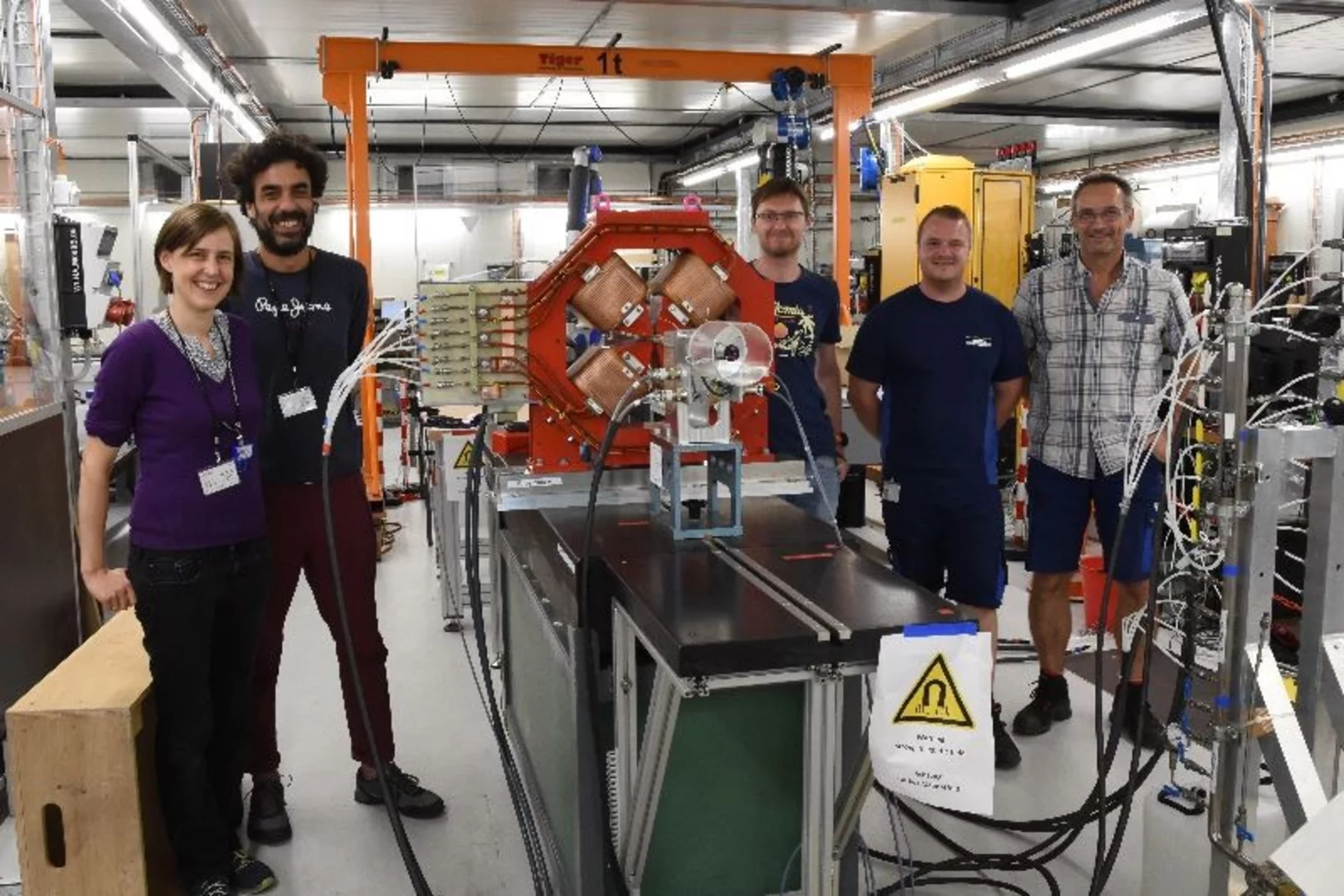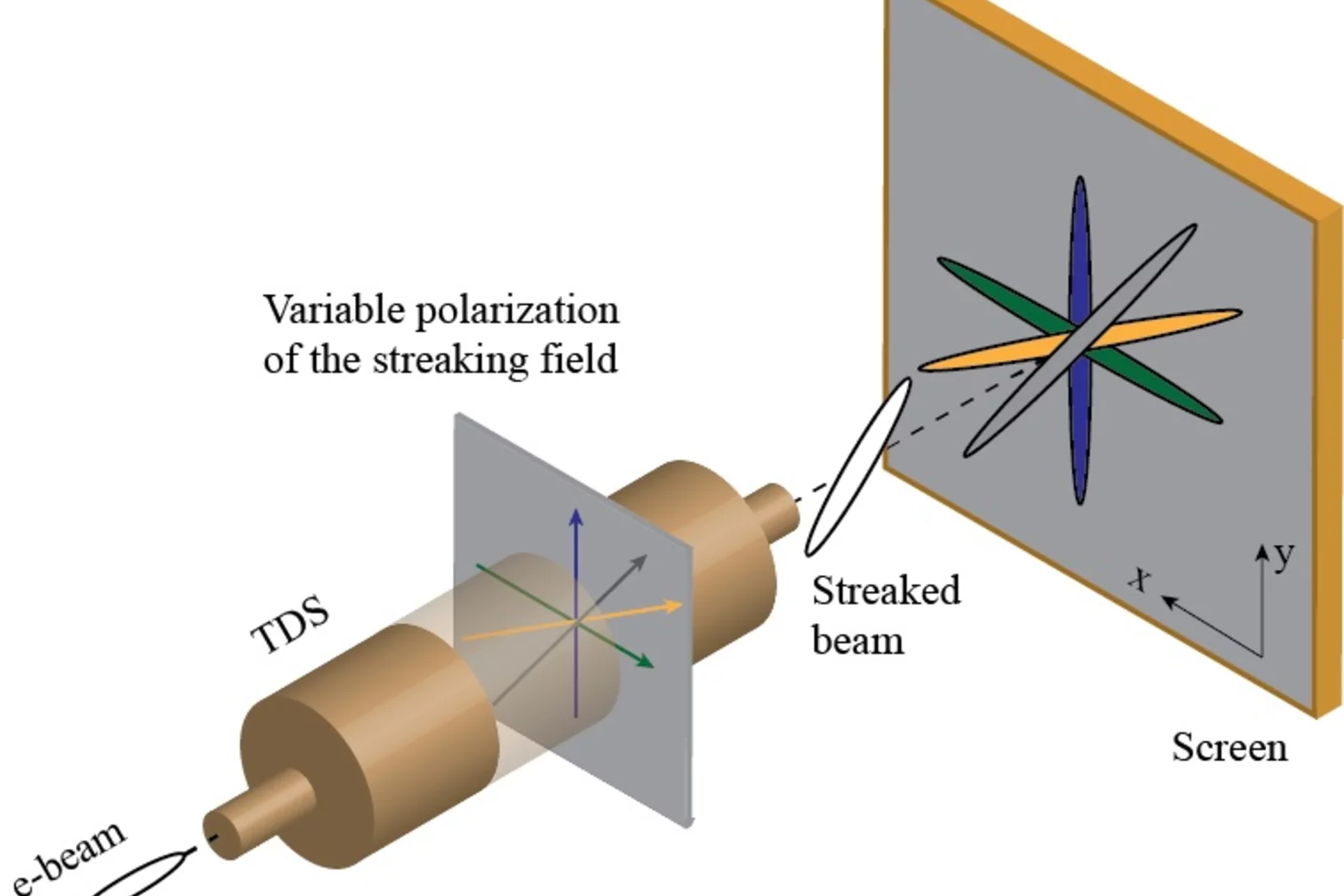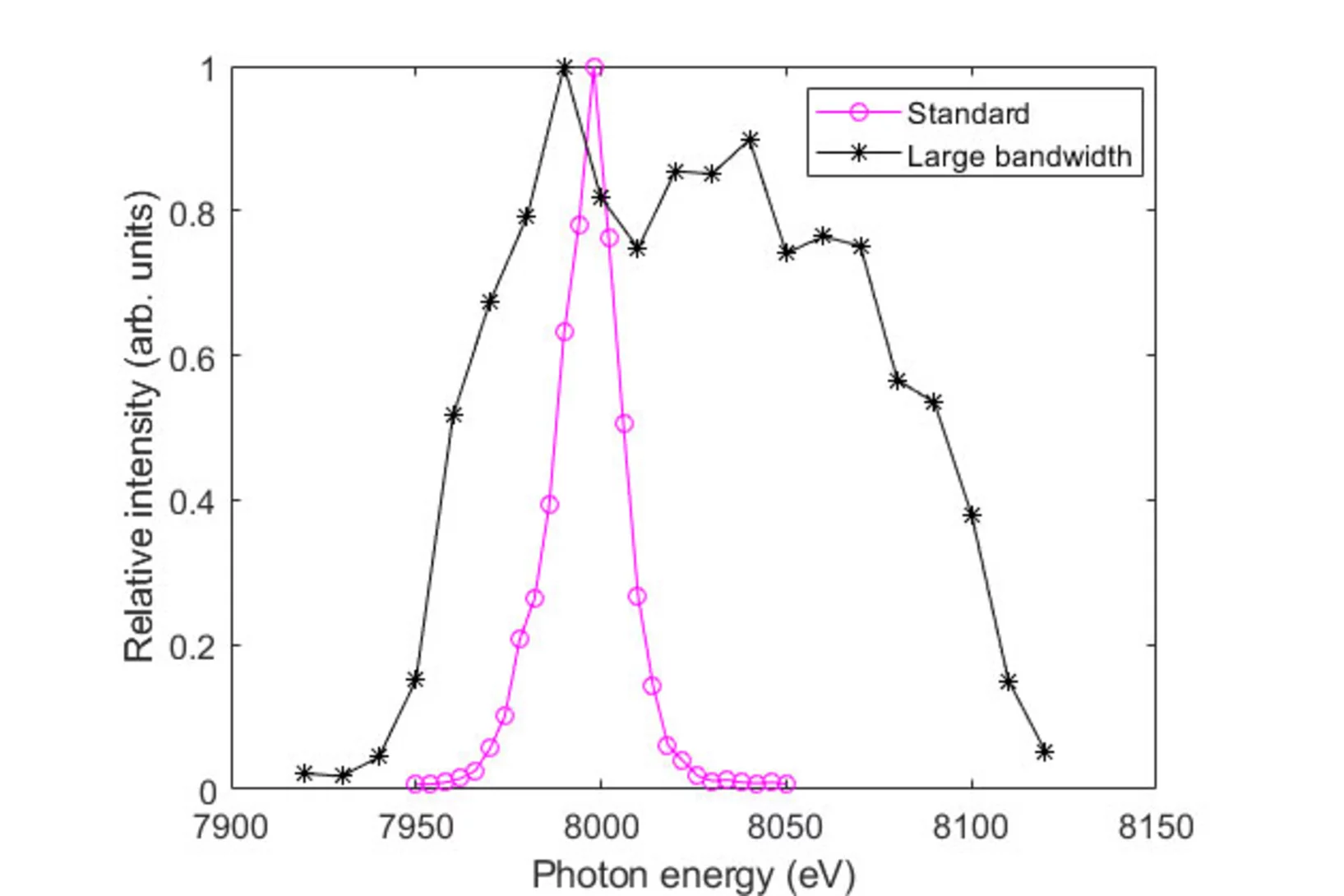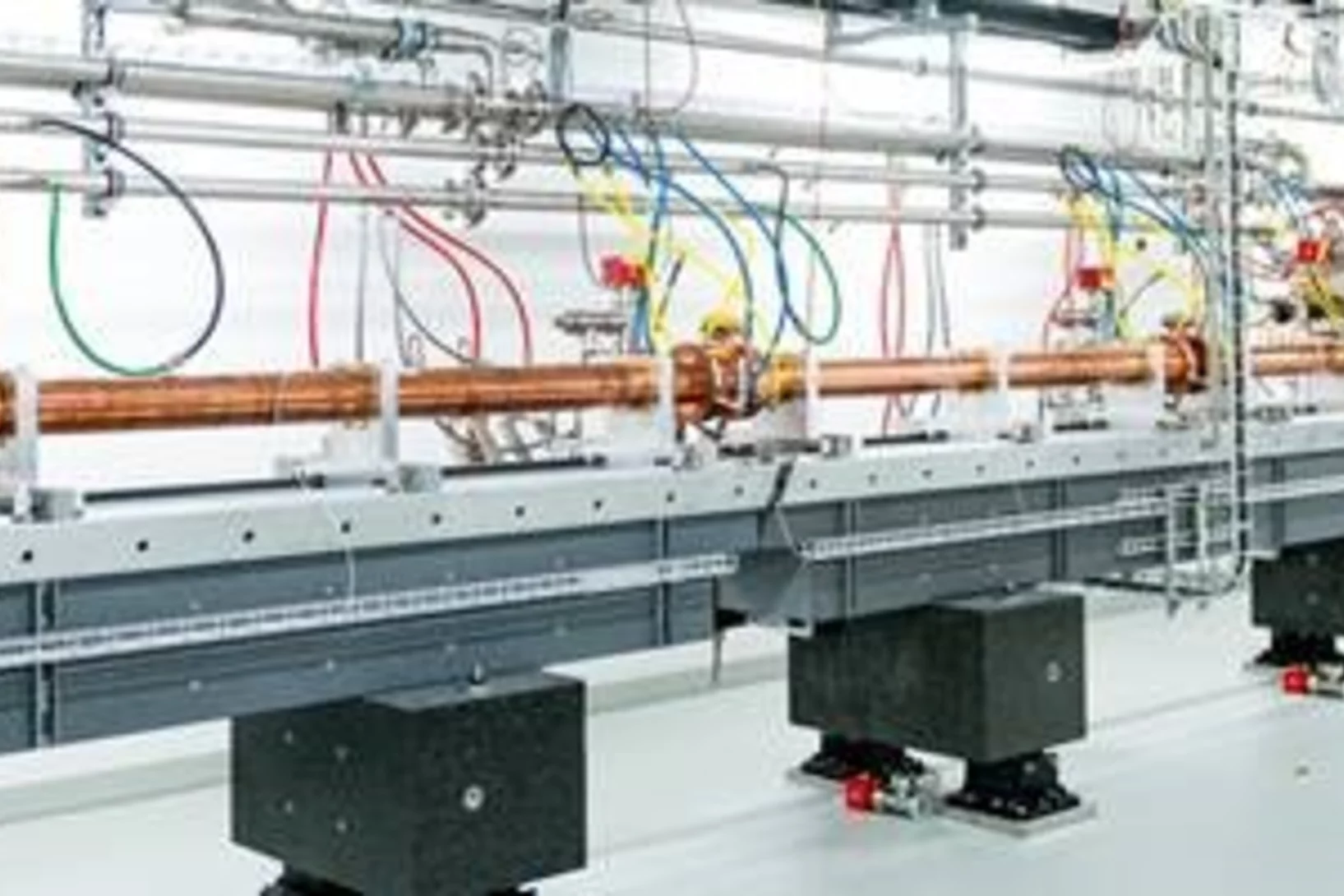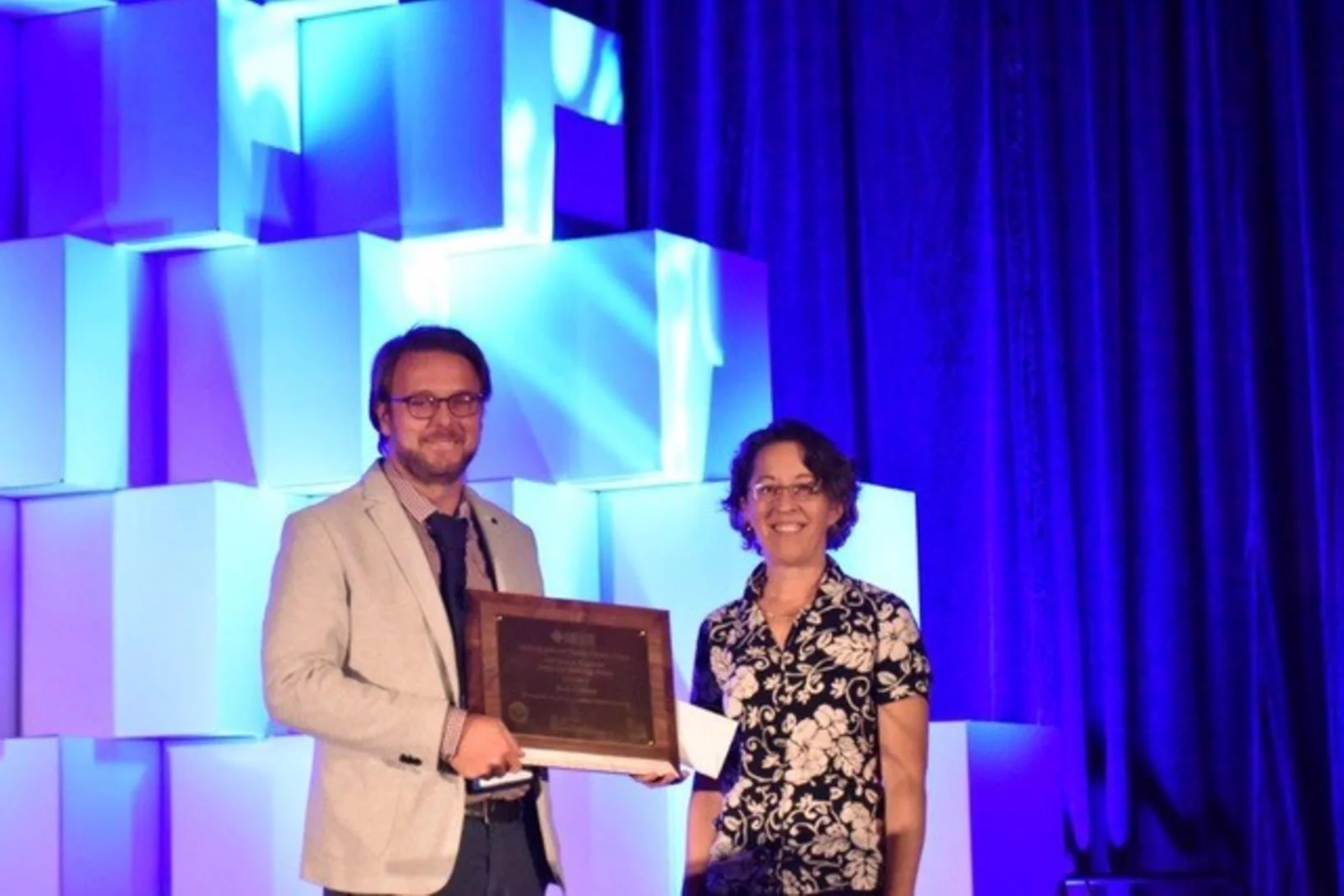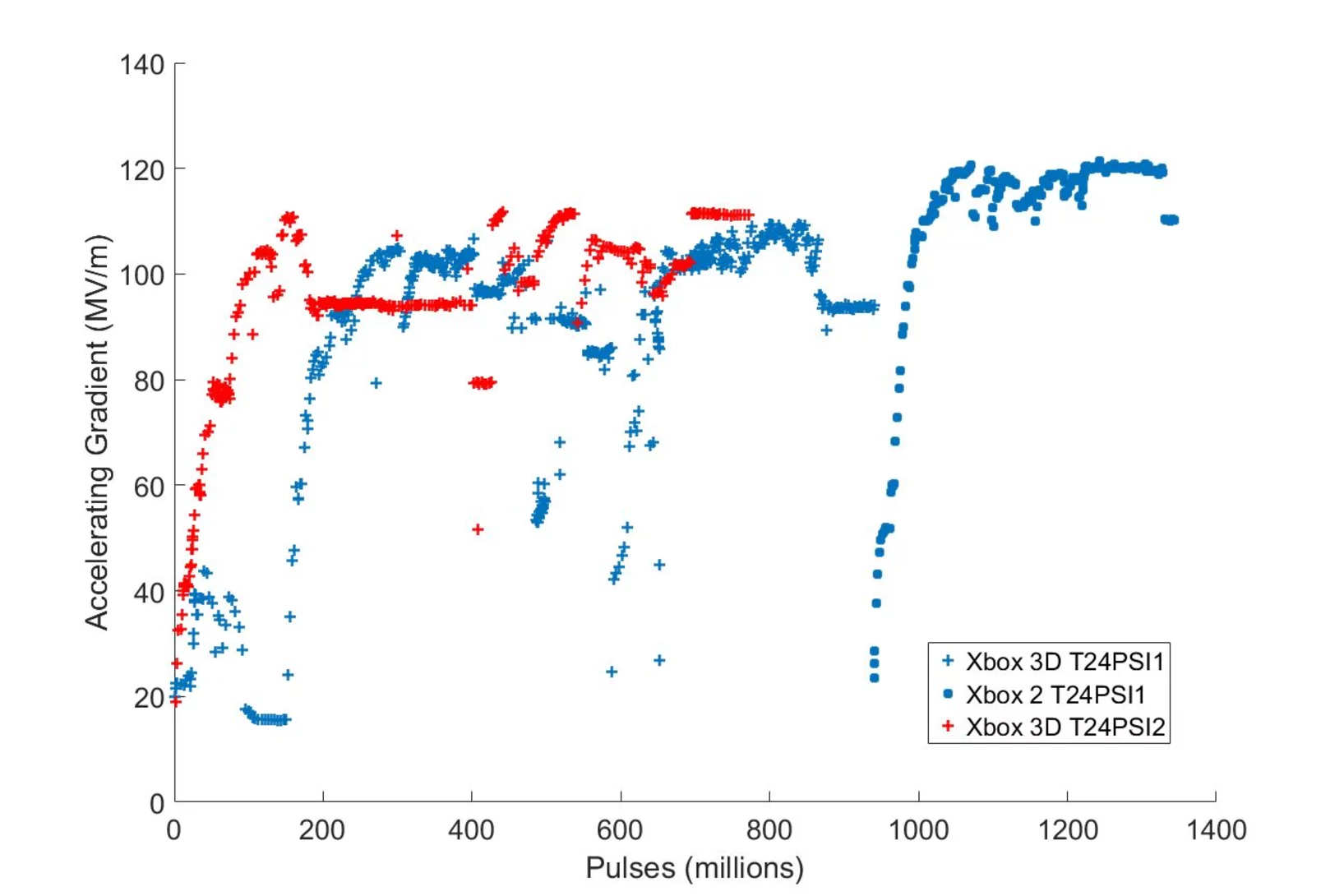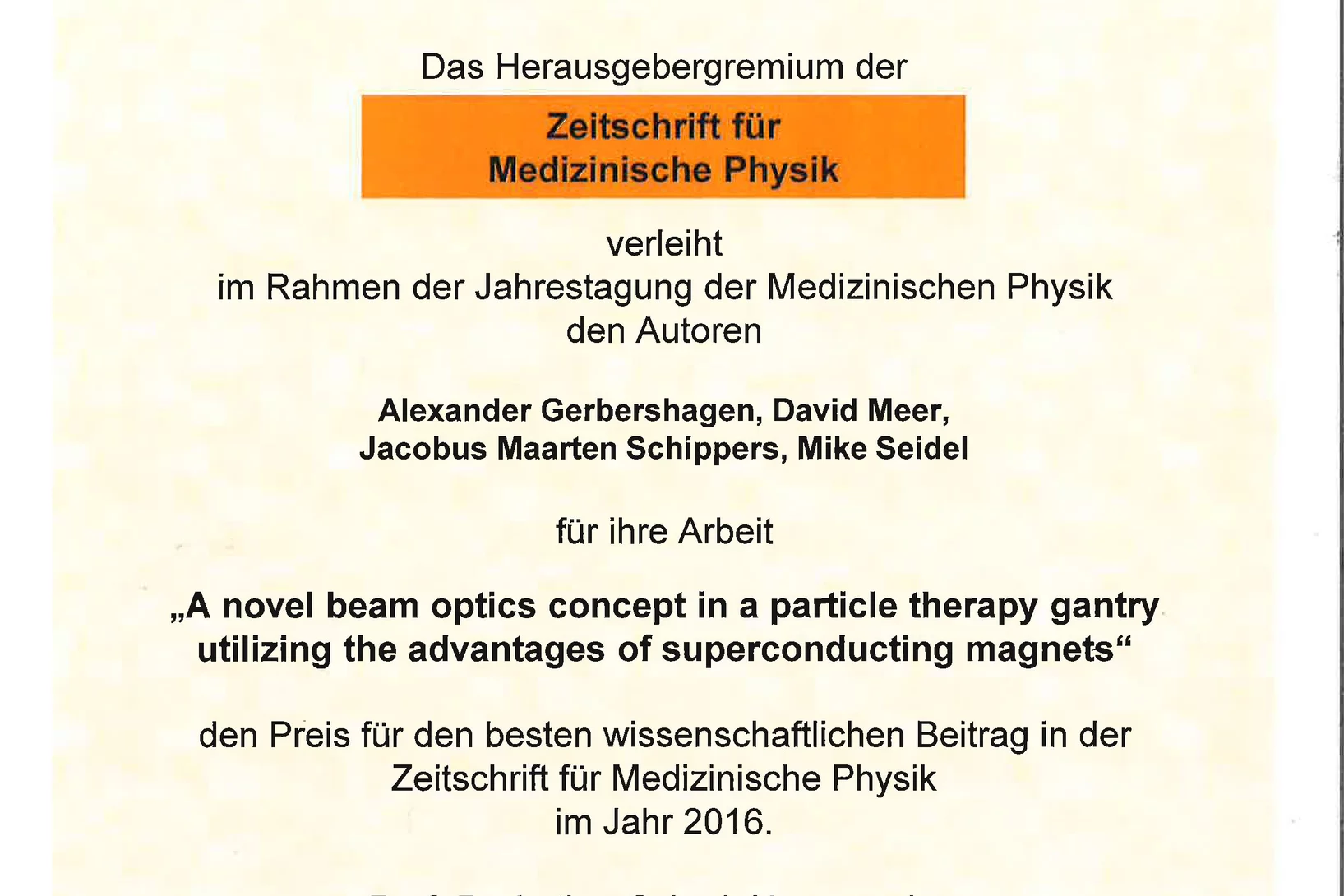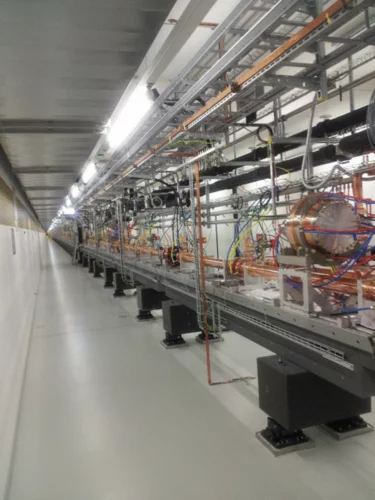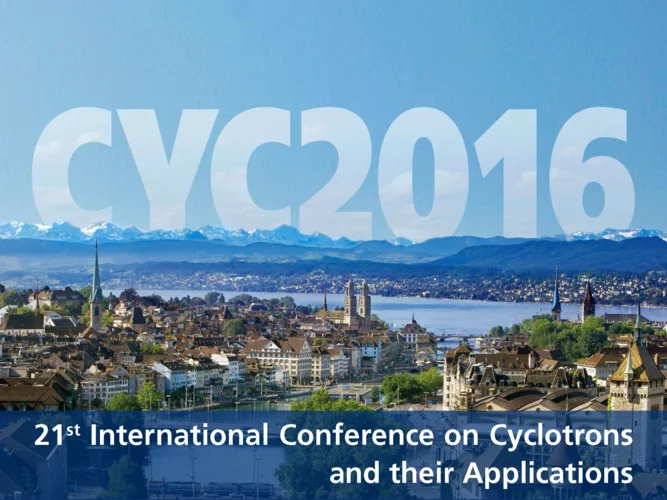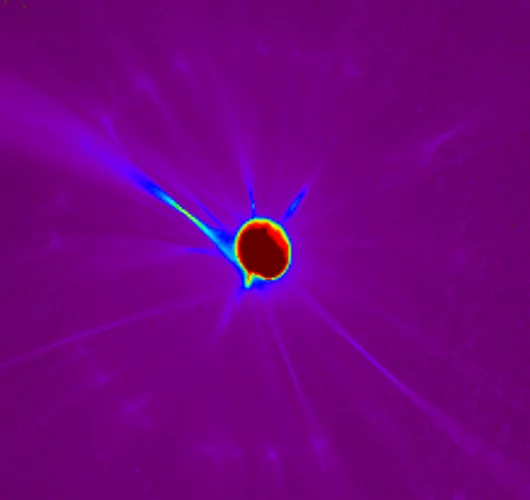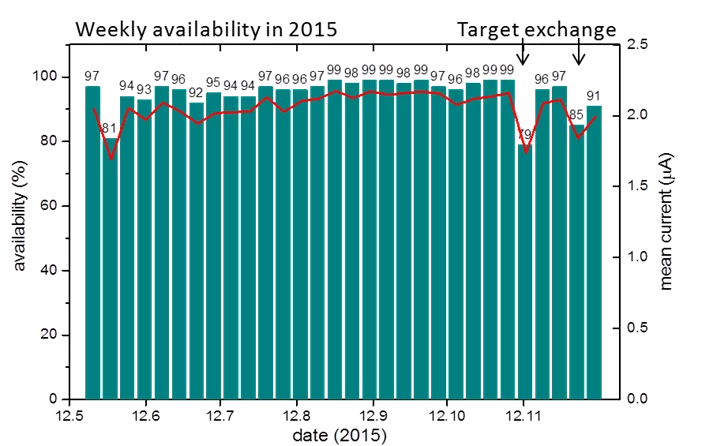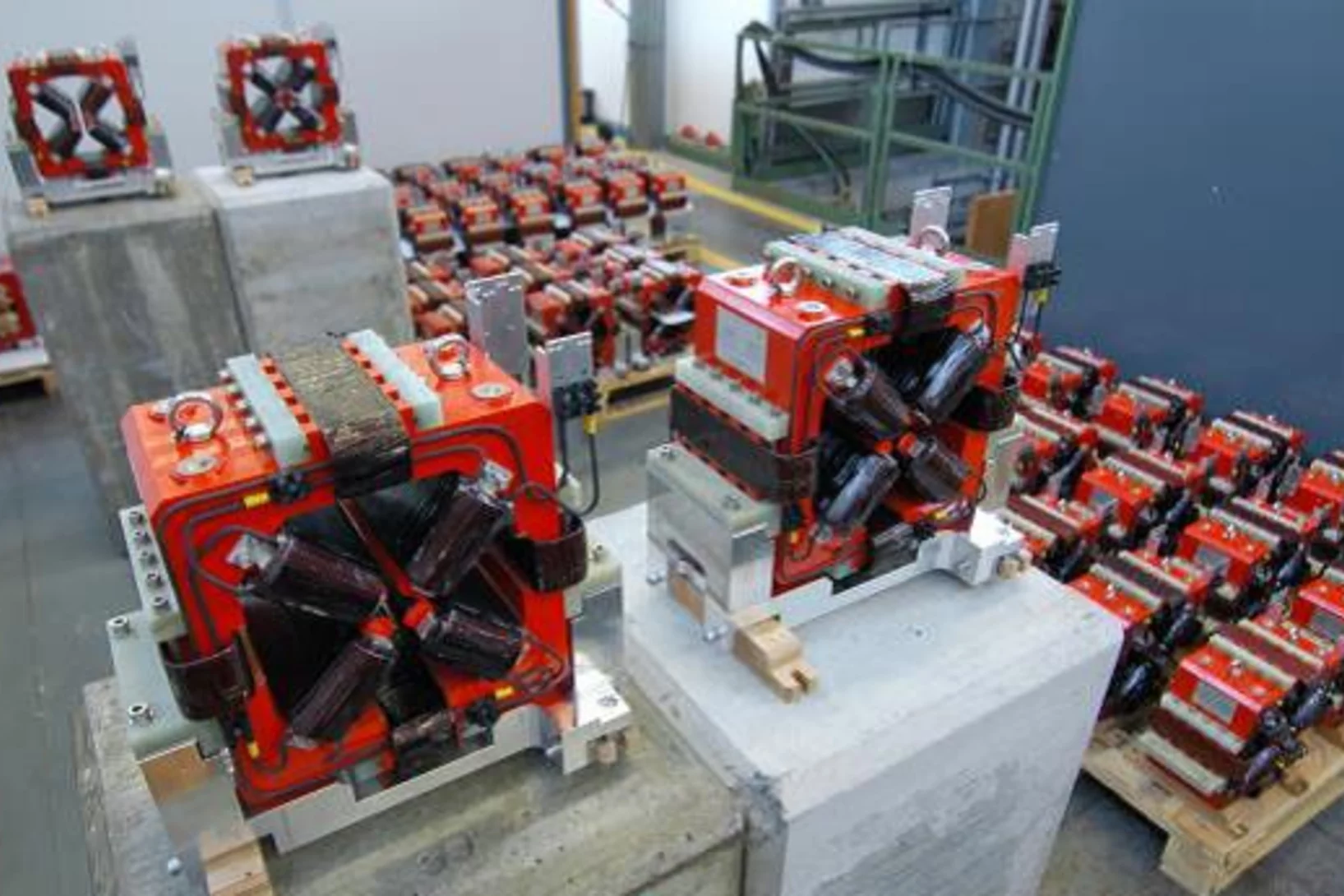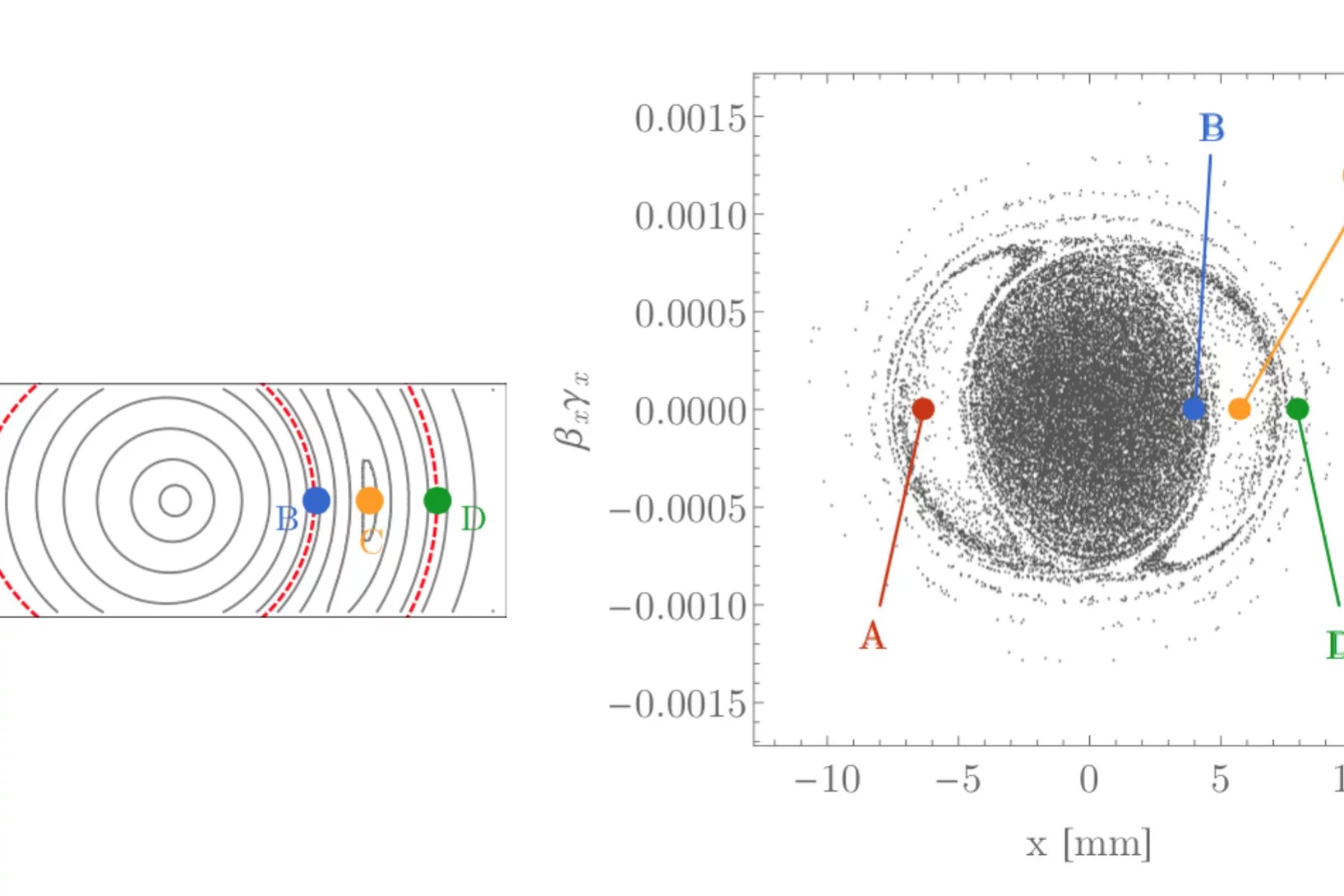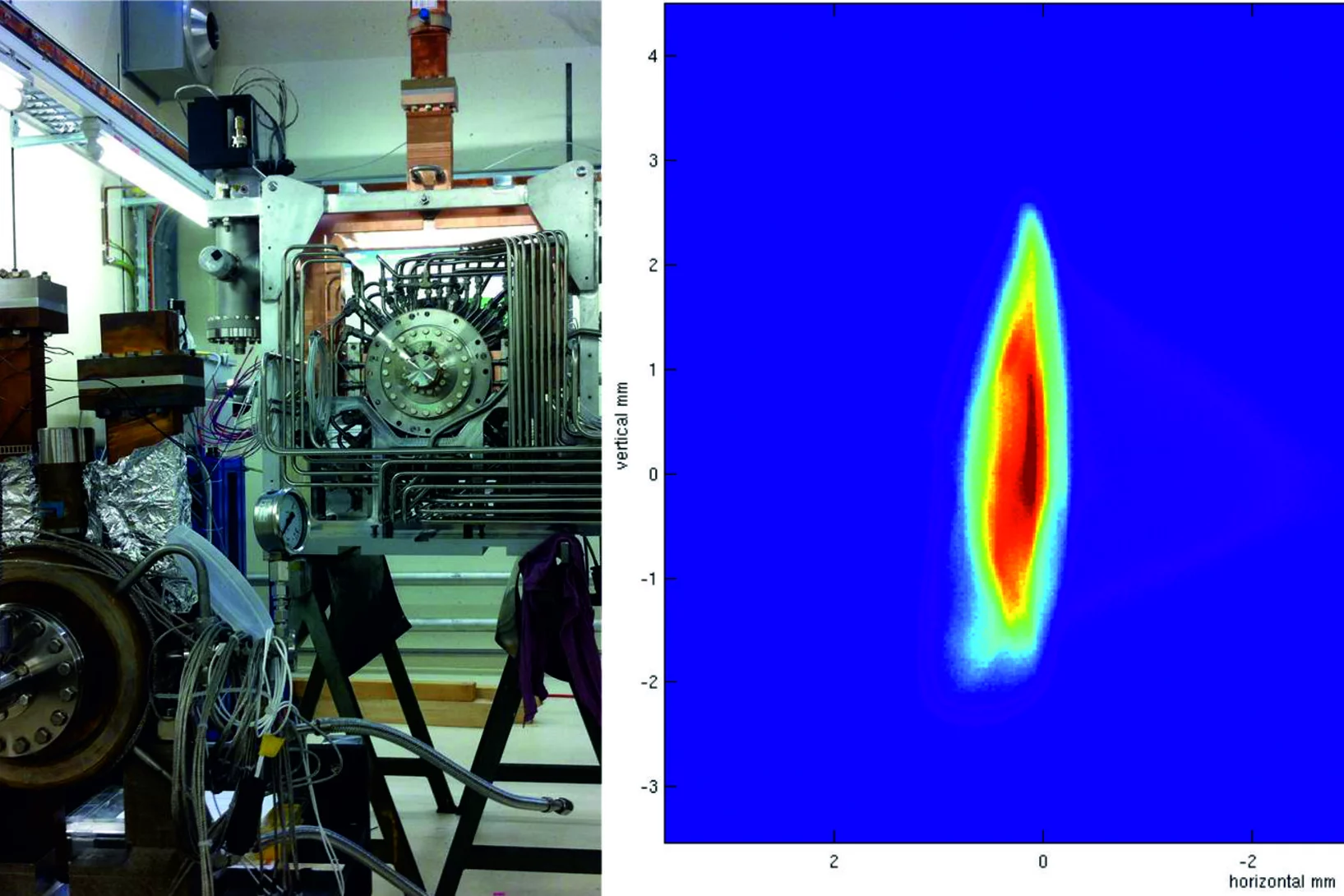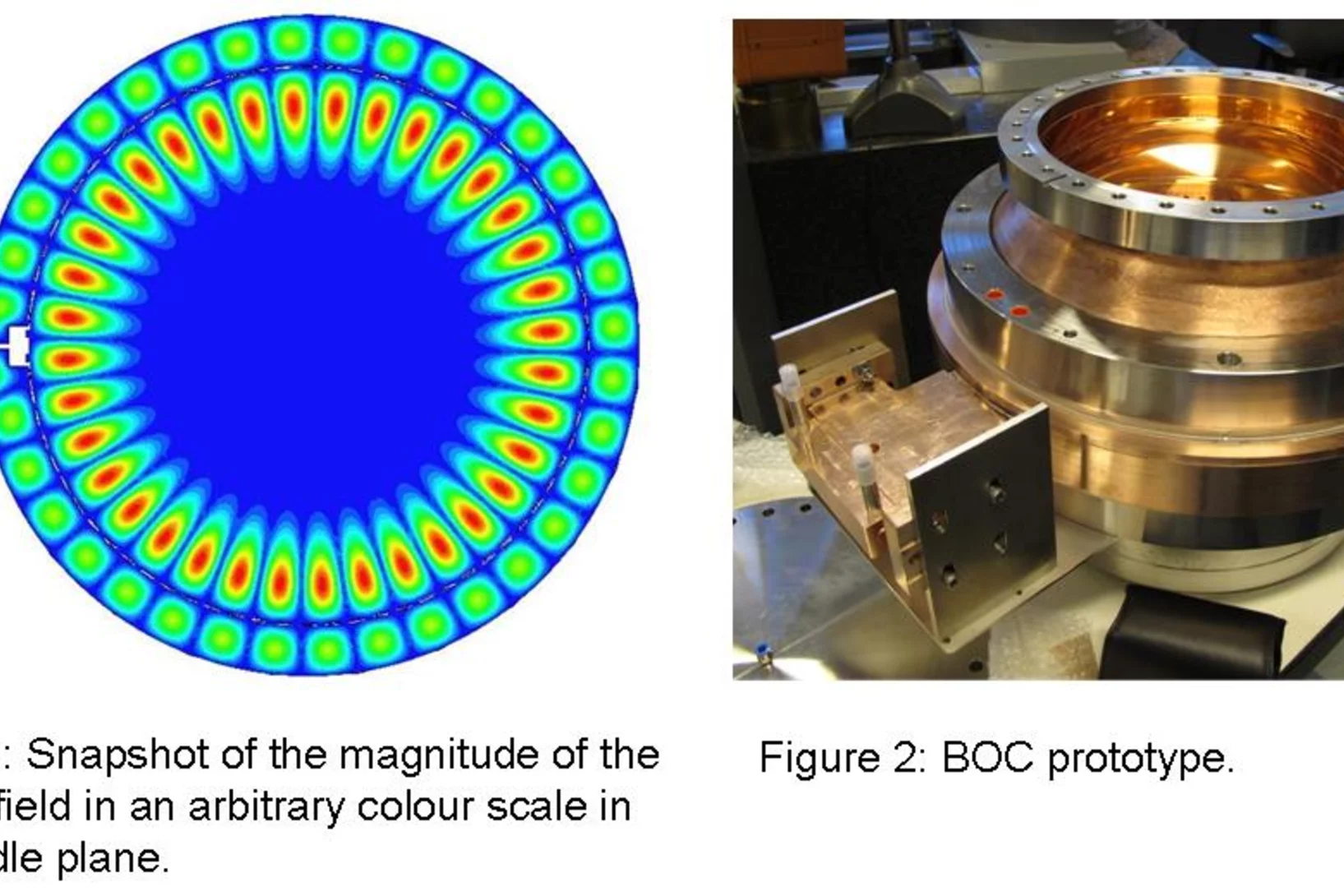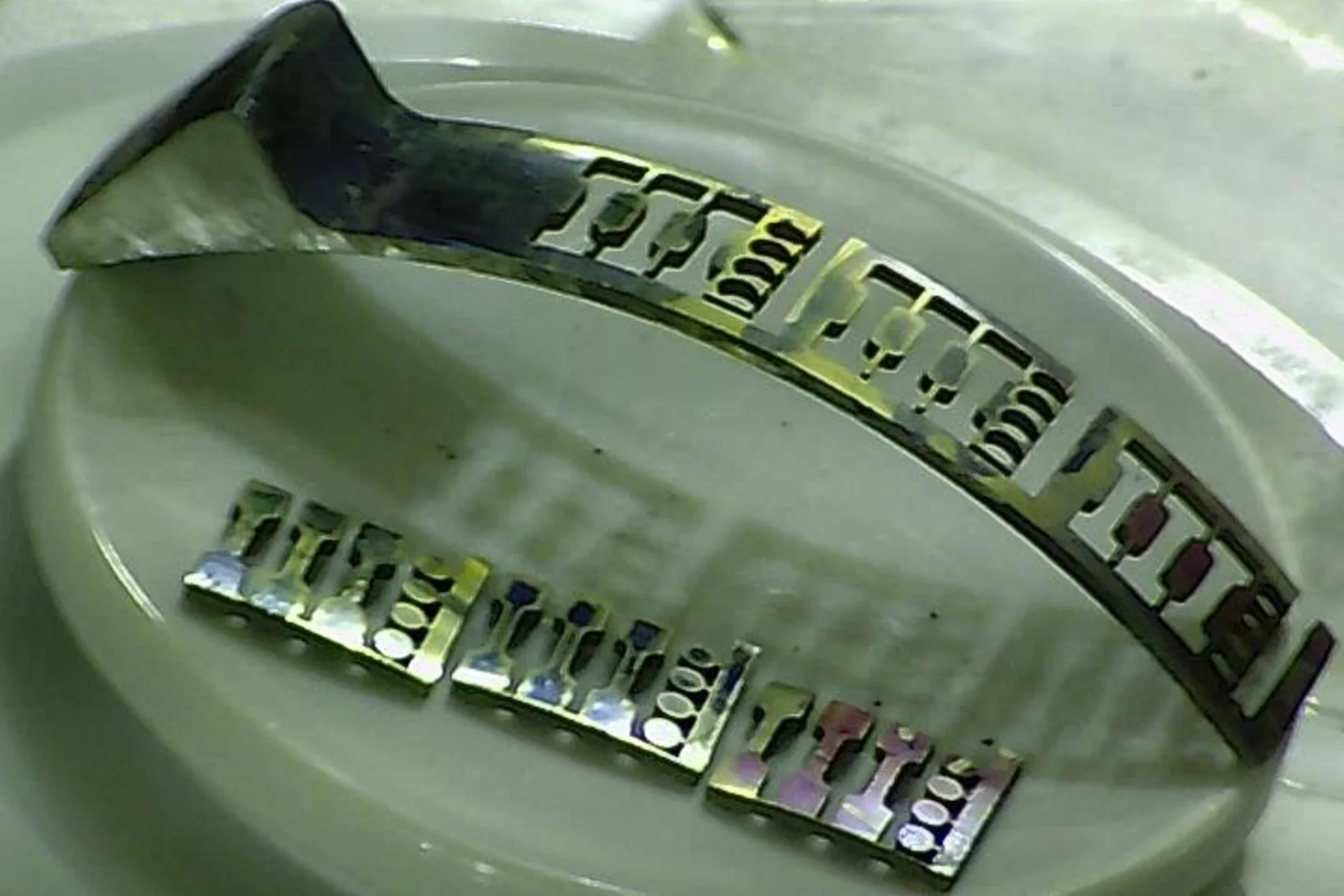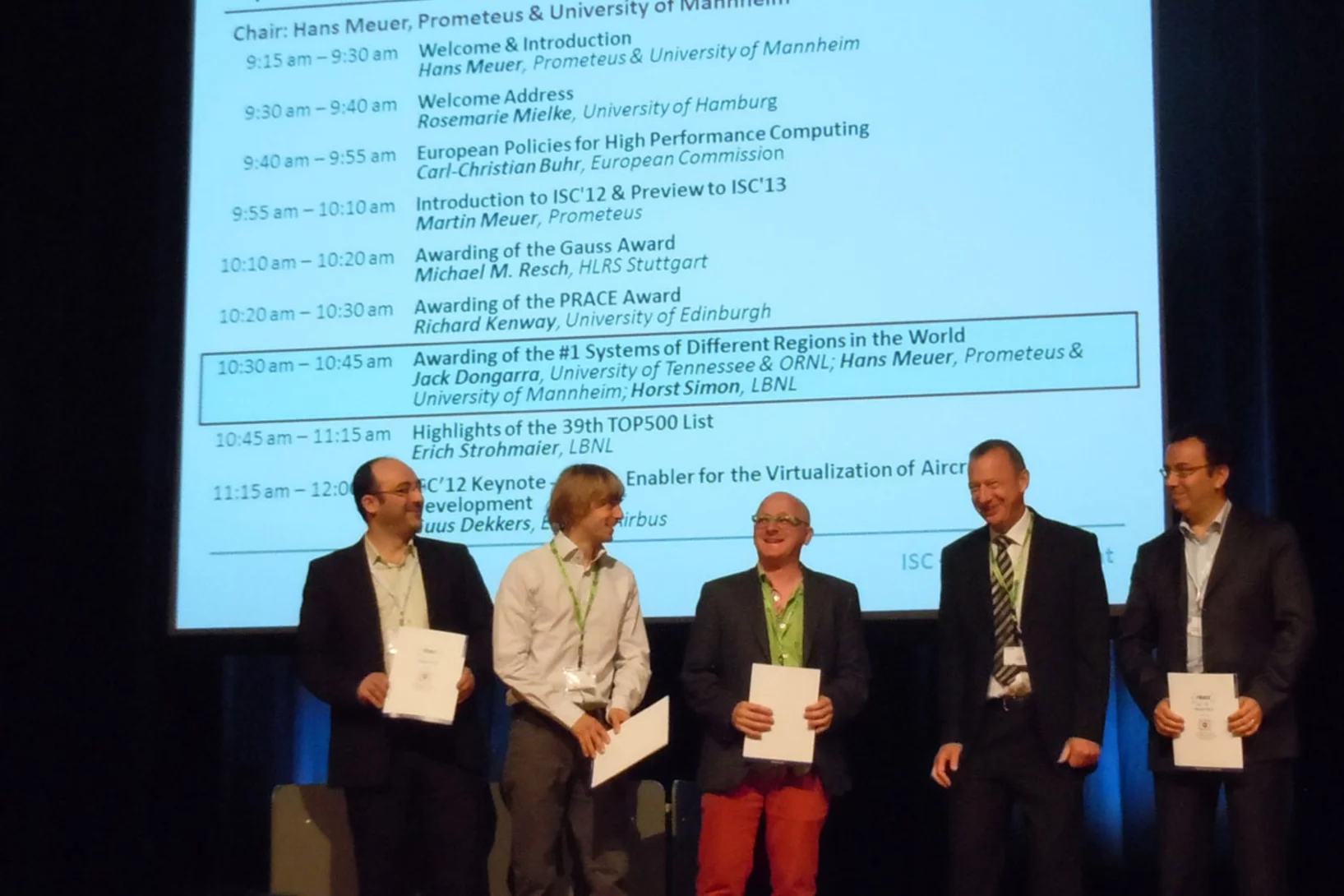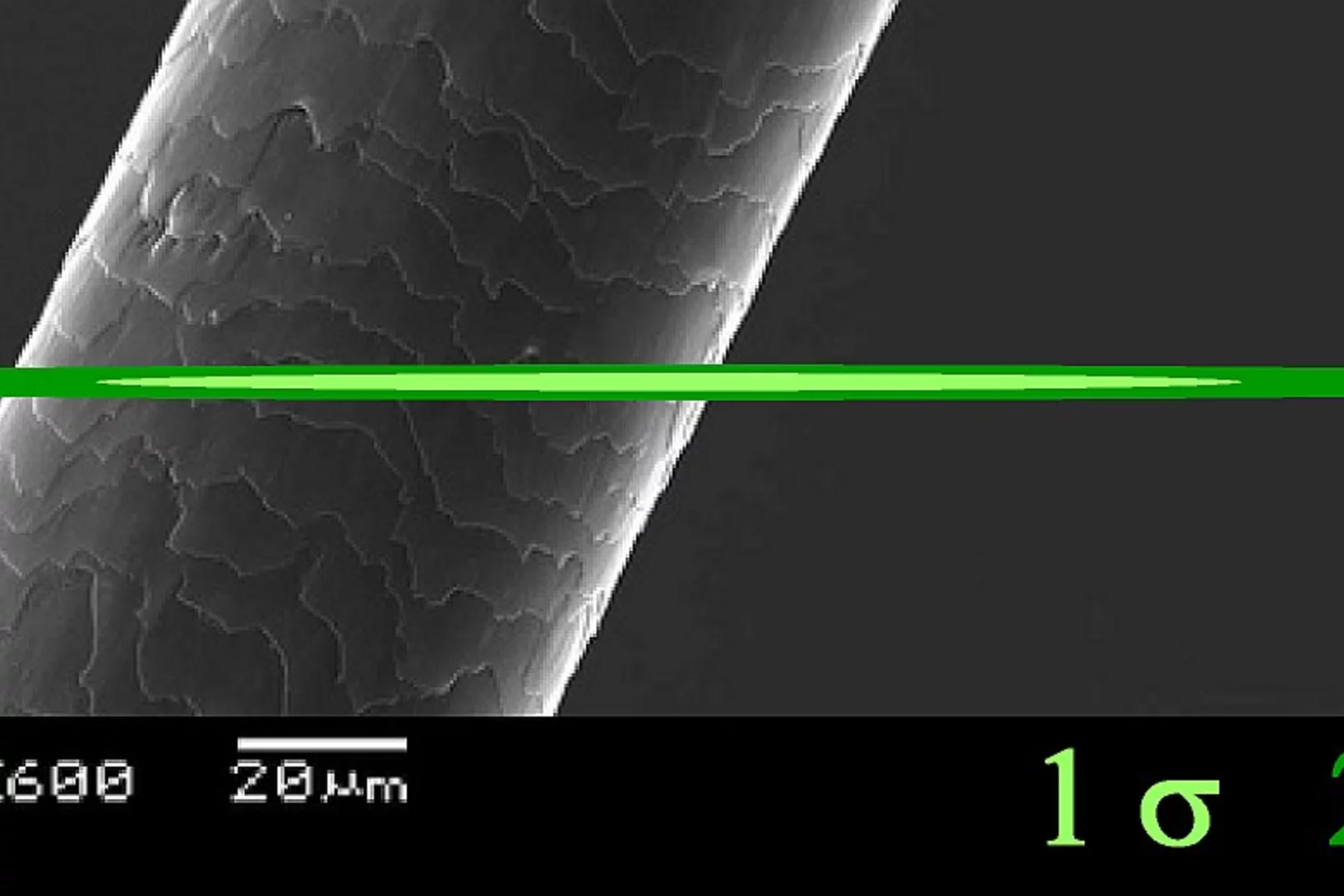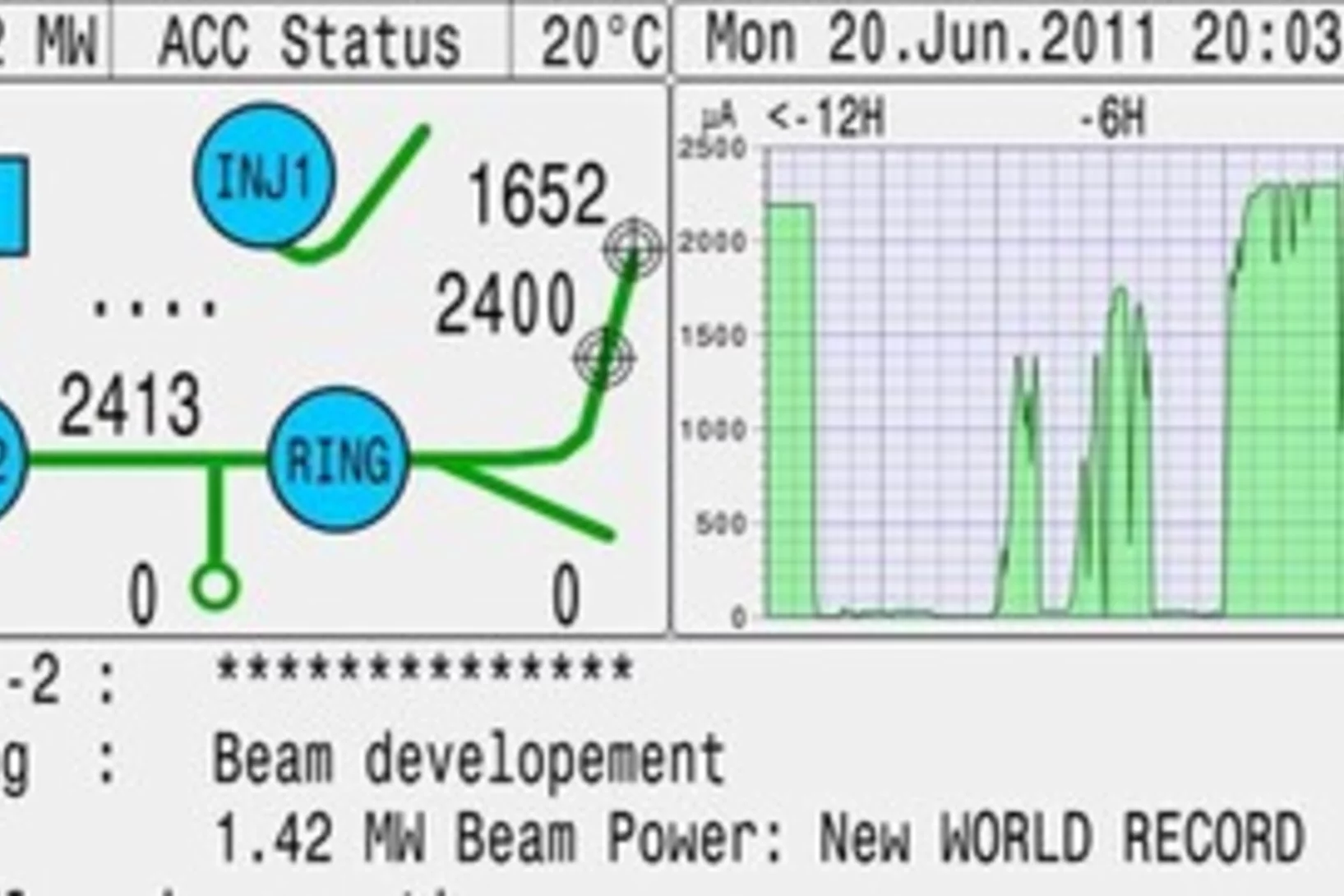Show filters
Installation of the first two front ends for the SLS2.0 completed
At the Swiss Light Source SLS of the Paul Scherrer Institute, another important step has been taken towards the completion of the SLS 2.0 upgrade project.
A more efficient degrader for proton therapy
At PSI’s Center for Proton Therapy (CPT), protons are used to treat cancerous tumours in a highly targeted way that spares healthy tissue as much as possible. This is the result of the characteristic way in which charged particles interact with matter, so that a beam of protons deposits most of its energy at a certain depth in a material depending on the energy and the composition of the material. The dedicated medical cyclotron COMET accelerates protons to an energy of 250 MeV, which then have to be "slowed down" so that the energy matches the depth of the tumour to be treated.
CHART MagDev CCT Dipole achieves record field
As one of the first CHART projects, the MagDev activity at PSI designed and built a canted-cosine theta (CCT) demonstrator magnet, wound from Nb3Sn conductor.
Ready for SLS2.0: First magnet series measurement completed
The first magnet series consisting of 112 quadrupole electromagnets for SLS2.0 were measured to high precision using a special home-made rotating coils measurement system. This is an important step forward for the realization of SLS2.0, the upgrade of the Swiss Light Source (SLS) at PSI, and a milestone for the members of the Magnet Section in GFA.
New record photon pulse energies at SwissFEL
The very large number of coherent photons produced by free-electron lasers is one of the key qualities of such facilities, attracting users from numerous research fields including chemistry, biology and materials science. Recently, the two branches of PSI's free-electron laser SwissFEL each have reached new record pulse energies, packing more photons than ever before into ultrashort X-ray pulses delivered at rates of 100 Hz to the users of both beamlines.
Novel X-band transverse deflection structure with variable polarization
The growing request for sophisticated electron beam manipulation techniques for the optimization of Free Electron Lasers (FELs) or novel acceleration techniques requires enhanced beam control capabilities and characterization. One of the most important challenge is the development of new diagnostic techniques able to characterize the longitudinal phase space of the beam, including spatial correlation terms, with a resolution in the range of a few tens of fs to sub-fs.
Demonstration of Large Bandwidth Hard X-Ray Free-Electron Laser Pulses at SwissFEL
We have produced hard x-ray free-electron laser (FEL) radiation with unprecedented large bandwidth tunable up to 2%. The experiments have been carried out at SwissFEL, the x-ray FEL facility at the Paul Scherrer Institute in Switzerland. The bandwidth is enhanced by maximizing the energy chirp of the electron beam, which is accomplished by optimizing the compression setup. We demonstrate continuous tunability of the bandwidth with a simple method only requiring a quadrupole magnet. The generation of such broadband FEL pulses will improve the efficiency of many techniques such as x-ray crystallography and spectroscopy, opening the door to significant progress in photon science. It has already been demonstrated that the broadband pulses of SwissFEL are beneficial to enhance the performance of crystallography, and further SwissFEL users plan to exploit this large bandwidth radiation to improve the efficiency of their measurement techniques.
Generation and measurement of ultralow-emittance electron beams at SwissFEL
The emittance is a fundamental parameter of particle distributions accounting for the average spread of the particles’ positions and momenta. We have generated and characterized intense ultralow-emittance electron beams, setting new standards for electron linear accelerators. The measurements have been carried out at the SwissFEL accelerator of PSI. SwissFEL is one of the few X-ray free-electron lasers (FELs) worldwide, which are cutting-edge research instruments to investigate matter with resolutions at the level of atomic processes.
Award by NPSS
The IEEE Nuclear Plasma Science Society has recently awarded Dr. Paolo Craievich, leader of the group «RF-system 2» in GFA, with the Particle Accelerator Science Technology award for his exceptional contributions to accelerator science and technology. https://www.frib.msu.edu/events/2019/napac19/awards.html
First Demonstration of Sub-femtosecond X-ray Pulses at SwissFEL
We have produced ultra-short X-ray FEL pulses at SwissFEL by strongly compressing low-charge electron beams. Single-shot spectral measurements with only a single mode (see the figure below) indicate a pulse duration well below one femtosecond (detailed analysis on the exact pulse duration is ongoing).
Outstanding high gradient performances of two test structures produced at PSI for the CLIC project
X-band (12 GHz) radio-frequency (RF) accelerating structures are under consideration for future free electron lasers, medical linacs and linear colliders. Two such structures, built by PSI in the framework of a CERN/PSI collaboration, are currently being tested at high power at CERN.
Best publication
A team of GFA and CPT physicists has worked out a novel achromatic beam optics concept for a proton therapy gantry. The article on the concept in the journal Zeitschrift für Medizinische Physik has been awarded a prize for the best publication in 2016. The jury states: „The paper of Alexander Gerbershagen et al. entitled „A novel beam optics concept in a particle therapy gantry utilizing the advantages of superconducting magnets” describes a new concept of a first order design of the beam optics of a superconducting proton therapy gantry beam. The jury was impressed by the well-structured experimental work with clear improvement of large momentum acceptance in the gantry which opens the possibility of implementation new and faster dose application techniques in proton therapy.”
X-band prototype structure
Radio-frequency structures at X-band frequencies (~ 12 GHZ) are being considered for applications in compact Free Electron Lasers, medical linacs, a future linear collider (CLIC project) and as a diagnostic for measuring ultra-short (femtosecond) electron pulses in FELs. A first prototype of such a structure has been built at PSI employing the realization procedures that have been developed for the C-Band (6 GHz) structures of the SwissFEL linac.
First acceleration with the SwissFEL C-band module
On Thursday 08/09/2016, the first C-band module boosted an electron beam from 150MeV to 390 MeV. This is the first beam acceleration test of a C-band module in PSI and is an important milestone for the project, since the main accelerator consists of 26 C-band modules of the same kind.
21st International Conference on Cyclotrons and their Applications
The 21st conference in this series takes place from September 12 to 16, 2016 at the Federal Institute of Technology in Zürich. The cyclotron is a simple and efficient particle accelerator and its invention for the purpose of performing fundamental research dates back to 1929. Ernest Lawrence received the Nobel Prize for his idea in 1939. Today cyclotrons are used in a broad range of applications from large and complex facilities for basic research to highly optimized and cost effective solutions for industrial and medical applications. The series of cyclotron conferences provides a forum for the world leading experts to meet and to discuss technological and physics advancements in the field.
First Electron Beam in the SwissFEL Facility
On August, 24th 2016, the electron gun accelerated the first photo-electrons in SwissFEL up to the energy of 7 MeV, initiating the beam commissioning phase of the new SwissFEL facility. After several days of RF conditioning, the gun reached the nominal acceleration gradient of 100MV/m at an input power of 17MW with a pulse-width of 1 micro second at an operating frequency of at 2998.8 MHz.
Proton Accelerator Operation Statistics 2015
For the first time in the history of the High Intensity Proton Accelerator the availability of the facility reached an outstanding value of 95% in 2015 with a record value of 99.3% in week 44. In comparison to the two previous years this corresponds to a reduction of the downtime by 50%. The user operation in 2015 was started as scheduled and already in the first week the machine was available 97% of the scheduled beam time. In addition to the smooth operation of the facility, high intensity beam experiments could regularly be performed with currents of up to 2.4 mA. nu
GFA delivers the SwissFEL magnets on schedule
The Paul Scherrer Institut is building an X-ray free electron laser (SwissFEL) providing a source of intense, ultra-short pulses of coherent radiation in the wavelength range of 0.1 nm to 0.7nm. For the hard X-ray beam line, the magnet section in GFA/ATK has the responsibility for the design, the procurement and the magnetic qualification of 267 electro-magnets of 22 different types. Several design studies were performed in an attempt to meet the required magnet specifications while optimizing construction and operation cost.
ETH-Medal 2015 for outstanding MSc thesis
The detailed understanding of particle motion in the outer region (halo) of a bunched beam is of utmost importance for all existing and future high intensity hadron accelerators in view of minimizing particle losses and machine activation. Particle-core models separate the motion of halo particles from the core and treat them as test-particles. Therefore these reduced-order models are computationally inexpensive compared to full particle-in-cell simulations and can, to some extent, be derived analytically, thus giving insights into the non-linear mechanism of halo formation.
First beam from the SwissFEL electron gun
The new 3 GHz photocathode gun will provide the electron bunches for SwissFEL and has recently been installed in the SwissFEL injector test facility. There, it replaced the CTF2-gun 5, borrowed from CERN. The new gun is capable now of operation with 100Hz repetition frequency and a higher field on cathode and improved field symmetry. After RF conditioning of about 4 days, the gun reached the nominal acceleration gradient of 100 MV/m at an input power of about 17 MW and pulse-width of 1 microsecond.
RF Pulse compressor for the SwissFEL
The SwissFEL C-band (5.712 GHz) linac consists of 26 RF modules. Each module is composed of a single 50 MW klystron feeding a pulse compressor and four two meter long accelerating structures. The pulse compressor is a passive device that compresses in time the 3 μs pulse from klystron into a 330 ns pulse. The compressed power is then guided to the four accelerating structures. The pulse compressor is based on a single Barrel Open Cavity (BOC). The BOC makes use of a “whispering gallery” mode which has an intrinsically high quality factor and operates in resonant rotating wave regime (Figure 1); moreover, and contrary to the conventional SLED scheme, a single cavity is sufficient to define the pulse compressor, without the need for two cavities. A prototype has been manufactured by the Dutch company VDL (Figure 2) and successfully power tested in PSI reaching a peak power of 300 MW.
MEGAPIE samples delivered to partners for post irradiation investigation
The MEGAWatt Pilot Experiment was operated for neutron generation with the PSI high intensity proton beam in 2006. The experiment utilized liquid target material, a lead bismuth eutectic. This marked a major milestone towards Accelerator Driven Systems (ADS), which are intended to be used for the incineration of nuclear waste.
ETH Zurich, IBM and Paul Scherrer Institut Researchers receive 2012 PRACE Award
The MEGAWatt Pilot Experiment was operated for neutron generation with the PSI high intensity proton beam in 2006. The experiment utilized liquid target material, a lead bismuth eutectic. This marked a major milestone towards Accelerator Driven Systems (ADS), which are intended to be used for the incineration of nuclear waste.
Vertical Emittance of the SLS Storage Ring
On the 6th of December 2011 the vertical emittance of the SLS storage ring could be reduced to a world record low value of 1pm rad. The vertical beam size in the short straight sections of the SLS is then only 3 micron (rms). This was achieved through vertical re-alignment of the magnet girders with 400mA stored beam and fast orbit feedback running, as well as through application of several different methods of coupling suppression using 36 skew quadrupoles. High resolution profile monitor utilizing vertically polarized component of synchrotron radiation allowed precise determination of the beam size.
PSI sets world record with 1.4 MW proton beam
The highest average power proton beam in the world was produced on 20th of June in the 590 MeV cyclotron at Paul Scherrer Institut. Extremely low beam losses achieved in this 35 years old veteran cyclotron allowed PSI team of accelerator scientists and engineers to put 1.4 MW beam of protons onto the muon and neutron spallation targets. This beam is used to produce the brightest beam of muons in the world, as well as supply neutrons for the spallation source SINQ.
